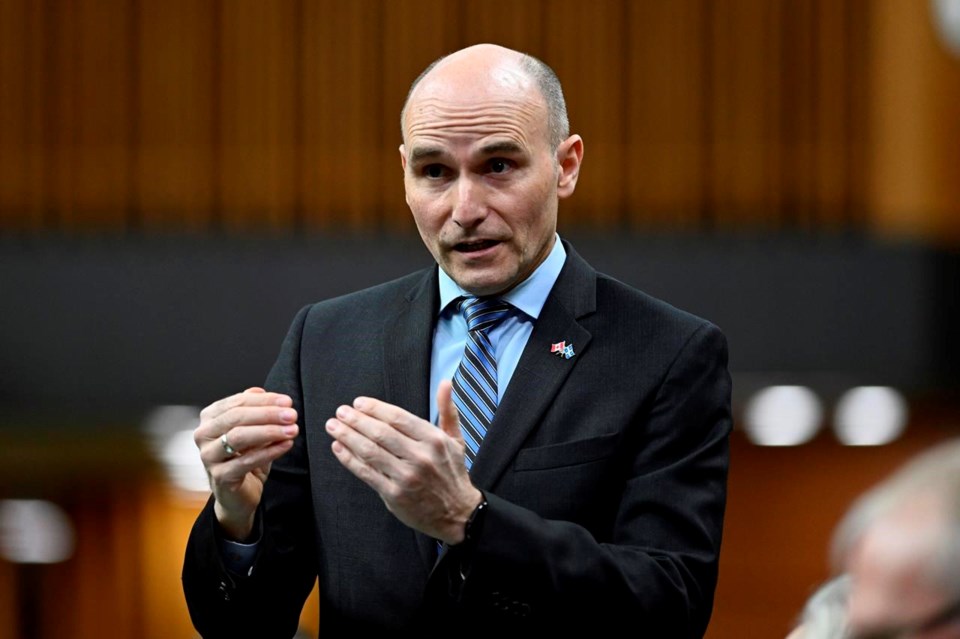OTTAWA — The federal government now expects far more Canadians with long-overdue dental needs to sign up for its insurance plan, and the health minister says that's why the estimated cost has risen by $7 billion.
In its 2023 budget Tuesday, the government revealed the federally administered insurance program will be far more expensive over the next five years than it originally thought.
It is also projecting that ongoing costs after that will more than double to $4.4 billion per year, up from $1.7 billion.
Duclos said administration costs have not contributed to driving up the price.
"It's more people with greater needs," he said in an interview Thursday.
"The fact that this is appearing to be in high demand, and in high need, is probably the outcome that for too many years prior to that program, there were people that were just not going to see a dentist for prevention purposes."
Dentists could end up seeing as many as nine million more patients who didn't have coverage before, new estimates suggest.
There are a lot of people who don't make enough money to be able to afford dental care, but make too much to qualify for provincial programs for people with low income, Prime Minister Justin Trudeau said Friday.
"We want to close that gap for working Canadians," Trudeau said at a press conference in Moncton.
The program is designed for people without insurance whose household income falls below $90,000 per year. Families who make less than $70,000 will not need to make co-payments.
Duclos said the scale of the program should not be underestimated — it's bigger than just about any other permanent government benefit program to date.
"It's twice as large as old age security, it's larger than (the) Canada child benefit in terms of the number of families and children, it's larger than (the guaranteed income supplement), it's larger than the early learning and child-care program that we're putting into place," he said.
Dental care is the centrepiece of the confidence-and-supply deal the Liberals signed with the NDP in March 2022.
The New Democrats have pledged to vote with the government on key items to prevent an election before 2025 in exchange for progress on certain priorities.
That includes firm timelines to launch the dental-care program by the end of this year for lower-income, uninsured children under the age of 18, seniors and people with disabilities. Full implementation is expected by 2025.
Within two weeks of signing that deal, the Liberal government put forward a budget that included federal dental care. Duclos said more work has been done since then to get a better sense of the cost.
He said they realized demand would be higher than expected when seeing uptake of the dental benefit for children under 12 this year.
The Liberals expected the temporary benefit would go to roughly 500,000 children between Oct. 1, 2022, and June 30, 2024.
But the government has already cut 240,000 cheques to help families pay for oral health appointments.
The plan is to replace that benefit with a full-fledged insurance program for eligible people by the end of the year, but Duclos and his team still have plenty to sort out before people can start making claims.
The aim is to provide coverage for people who don't already have insurance, without disrupting the patchwork of provincial and private plans that provide benefits across the country.
Duclos said he's well aware of the possibility that low- and middle-income earners could simply opt out of their employment plans in favour of the free government coverage.
"There will be mechanisms and relationship management exercises that will be there to support the importance of the federal program to be complementary, to be incremental to the existing coverage," he said.
People who have group benefits through their employer won't qualify for the federal program. The government will require employers to report to the Canada Revenue Agency which staff members have existing coverage, so they can't double-dip.
People on provincial plans, however, may be able to benefit from provincial and federal coverage at the same time, Duclos said.
"We're going to be open to complement that partial coverage by provinces and territories," he said.
The next major hurdle for the government before it can launch the program is to figure out who will handle the claims.
It will launch a request for proposals in June.
This report by The Canadian Press was first published March 31, 2023.
Laura Osman, The Canadian Press



